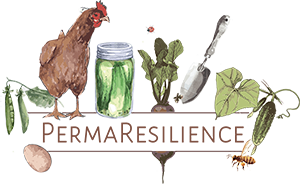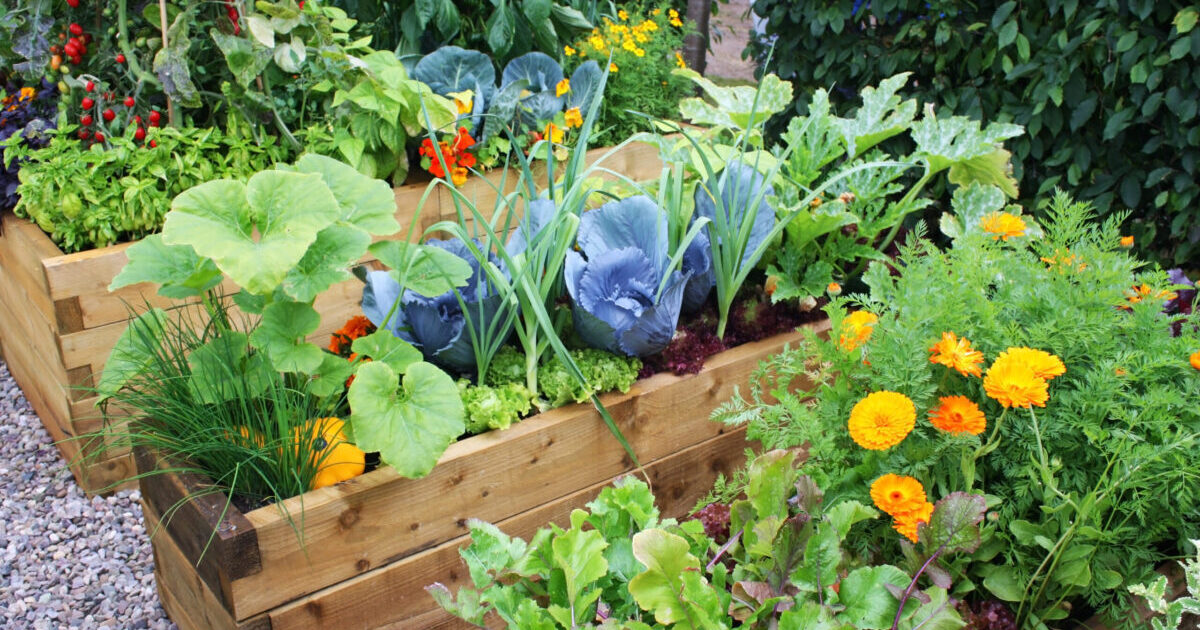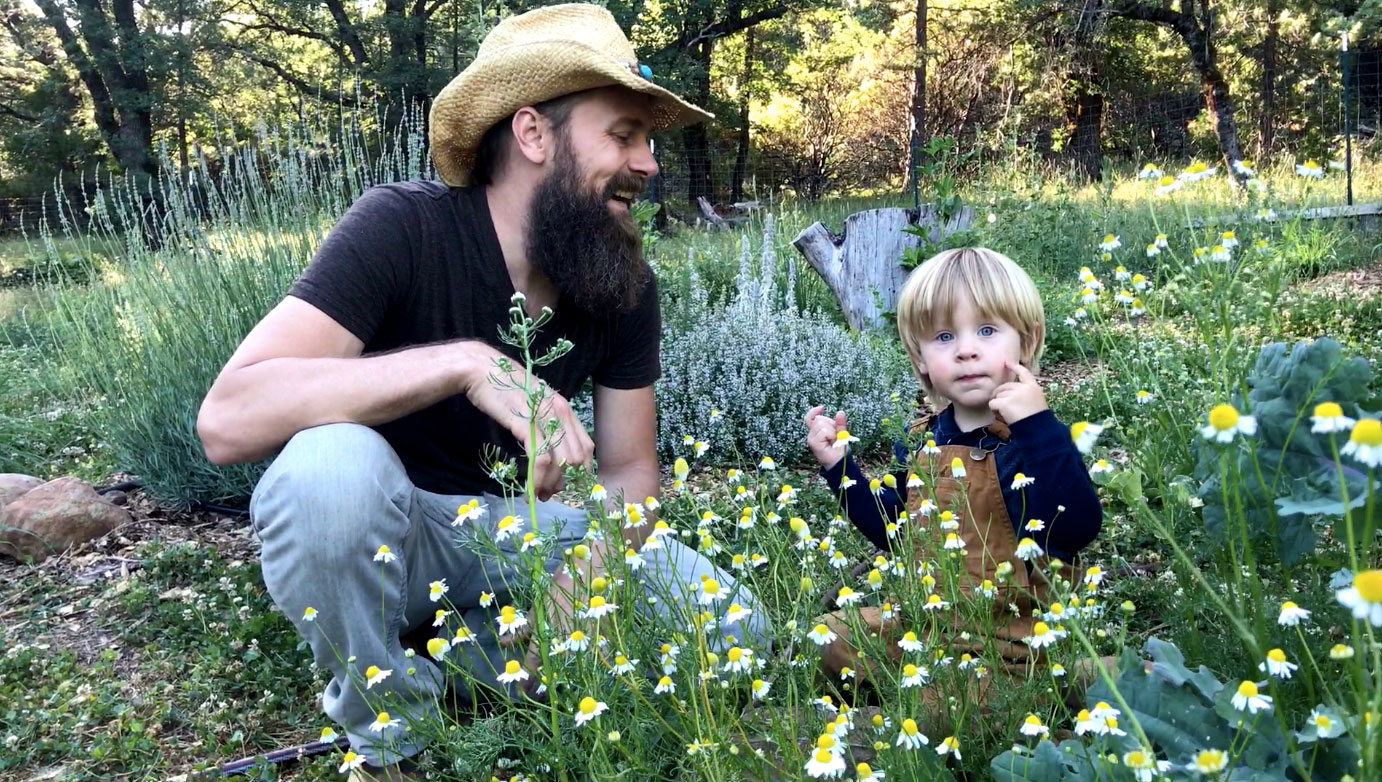Are raised beds better than in-ground beds? I’m comparing the two methods in this video and sharing the key aspects that must be considered before you decide so that you can create the healthiest veggies possible!
Video Transcript:
Welcome to the channel, everybody!
Today, I want to talk about what everyone has wrong about raised beds, so stay tuned.
All right, so first, let me start out by kind of sharing where we’re at and what we’re doing. We recently purchased this straw bale home on five acres here in southwestern Colorado, and we have an existing garden here that is a bit of a mess, and we’re working on getting into good shape for our season coming up here in really just a month or so.
One of the big problems that we have is that we have all these kinds of raised beds haphazardly placed throughout the garden area, and they’re awkward in size and shape. Like, some of the garden beds are so big that you have to walk through the middle of them to even get to some of the planting space.
So, we need to address these problems in this garden before we start investing our time, money, and energy into building the soil, and building the soil life so that we can ensure that we have strong, healthy plants that require minimal effort on our part.
One of the questions that come up for us then is, are we going to keep these beds raised, or are we going to do in-ground beds instead? Now, one of the things I’ve noticed is, you know, there are tons of articles online, such as the pros and cons of raised beds, you know, videos on YouTube talking about the 10 reasons why raised beds are amazing.
The big problem being is while they’re accurate, these videos are accurate when they come when they’re talking about the pros and cons of raised beds, they’re missing one of the most critical and one of the most important pieces about raised beds in deciding if they’re right for you.
So, I want to get into that real quick, and what we want to do is we want to leverage the system of permaculture. If you’re not familiar, permaculture is really just a methodology, a system where we seek to align beneficial components of a garden, homestead, or farm with nature to reduce the time, energy, and money that’s required to create more sustainability, to create more self-reliance, personal security.
We want to apply the ideas within permaculture when we’re looking at raised garden beds and deciding if they’re appropriate for us on our site.
Now, if you’re interested in learning more about permaculture, note there’s a link in the description below the video where you can attend my free web class that’s happening now where I teach you my top three secrets for using and applying permaculture in your garden and on your homestead.
All right, so real quick, I’ll go over some of the pros of raised beds for those of you who are interested in the idea in the topic but haven’t yet gone through some of those other videos on the pros and cons of raised beds. Now, raised beds evolved in northern Europe where they have higher water tables and year-round humidity and precipitation.
So the primary advantage of a raised bed is that it raises the root zone of the plants up off of the grade and gets the root zone out of that wet zone. What that’s going to do is it’s going to provide drainage, so that way you can grow food in some wetter areas where it might not otherwise be possible.
Raised beds are obviously more ergonomic. Being these ones here, about 10 inches off the ground, some raised beds can go up to a couple of feet where you almost don’t even have to bend over to work on the raised beds, and the ergonomics is a nice component of it. Aesthetics, you know, raised beds, they just look pretty dang nice in a garden.
Now, these ones do not, and that’s part of the reason why we’re addressing them. They’re this kind of plastic and all kind of wonky donkey and falling apart. Some additional pros of raised beds: that you have a little more control over your soil because you’re filling the beds with your own mixture, so you’re likely to right off the bat get just better soil, better texture, better drainage than you would be working with your own in-ground soil in your ground.
So other pros with raised beds, because they’re elevated off the ground, they actually warm up quicker, which is good in cooler climates like we are here because the sun’s going to hit the soil and warm it up quicker, and so you can start getting planting in some raised beds sooner than you might be able to otherwise.
And lastly, some would argue that raised beds have a little bit more control over pests, especially taller raised beds where they’re a couple of feet off the ground because it’s harder for rabbits and slugs and whatnot to get up into the beds and munch on the plants.
Next, some of the cons of raised beds. First and foremost, expense. The reality is that to build raised beds, which includes the materials for construction, often lumber or corrugated steel, and backfill them with soil, add compost, and amend the soil, it can get quite expensive, especially if you’re talking about doing it on any kind of scale where you’re even trying to attempt to grow a reasonable percentage of your food, so that’s one of the really big drawbacks.
Another drawback is they’re permanent which could be a pro in some instances but in the case of where maybe like renting and you have permission from the landlord to grow food, obviously you’re not going to want to build raised beds, you’re just going to want to grow in the ground.
Now another con of raised beds is from a consumeristic sustainability standpoint, it’s going to take materials to build them, and those materials have a carbon footprint, and in our case here, these garden beds are made out of this cheap plastic material, and so that material is going to break down over time and then put microplastics into the environment, which is not a good thing for anybody.
Now, another con of raised beds is from a consumeristic sustainability standpoint, it’s going to take materials to build them, and those materials have a carbon footprint.
In our case here, these garden beds are made out of this cheap plastic material, and so that material is going to break down over time and then put microplastics into the environment which is not a good thing for anybody.
So, another con here is that while raised beds are great for drainage in drier climates that can cause you to actually have to water the beds more, and of course, when we’re looking at things from the sustainability perspective, we obviously want to mitigate and manage our water use, especially in dry climates where drought is a concern.
Hey, real quick everyone, my chickens over here, the composting ones, they’re asking you to like and subscribe to the video so that way you be sure to get notified when we’re posting new content and keep serving this good kind of stuff up to you.
Alright then, so circling back to what I was saying earlier about how there’s one important piece that most everyone gets wrong about raised beds when they’re talking about them, and that is that they miss that…
Then, yes, raised beds might be very appropriate even if it is a little bit of a drier climate. Conversely, in drier climates, more often than not, raised beds are not totally appropriate.
Of course, there are other situations that we want to look at too. If you have basically a site with all bedrock and you don’t have any soil anyways, then you kind of have no choice.
If you want to grow food, you need to build raised beds, which, in my opinion, in most instances, as long as you’re growing a reasonable portion of your food, it does offset some of the sustainability questions when it comes to building materials and importing soils and so on.
As well as it creates personal security and self-reliance in uncertain times, so that’s a bonus there too. Also, for some people, maybe their soil has been contaminated, and it’s questionable to grow directly in the ground, so in those situations again, raised beds make total sense.
So, it’s a matter of context, that’s all. If a moist climate, is probably appropriate, a dry climate is probably not appropriate unless you can find a reason otherwise. Alright, so what are we doing here with our raised beds?
We’re going to be removing them and what we’re going to be replacing them with is in-ground beds with edges. So we’re going to be restructuring this whole thing using probably keyhole bed designs, which are a really good technique for maximizing space efficiency in smaller areas.
We’ll be using those kinds of beds in lieu of these raised beds up by the house here. And then, as we go further down the property, we’re still going to be doing in-ground growing, but we’re going to be doing it on contour along with the slope to catch rainfall and prevent soil erosion on those beds.
All right, so that’s what I have for you today. I’m heading in, and if you would hit that like and subscribe button on your way out, see you next time.








